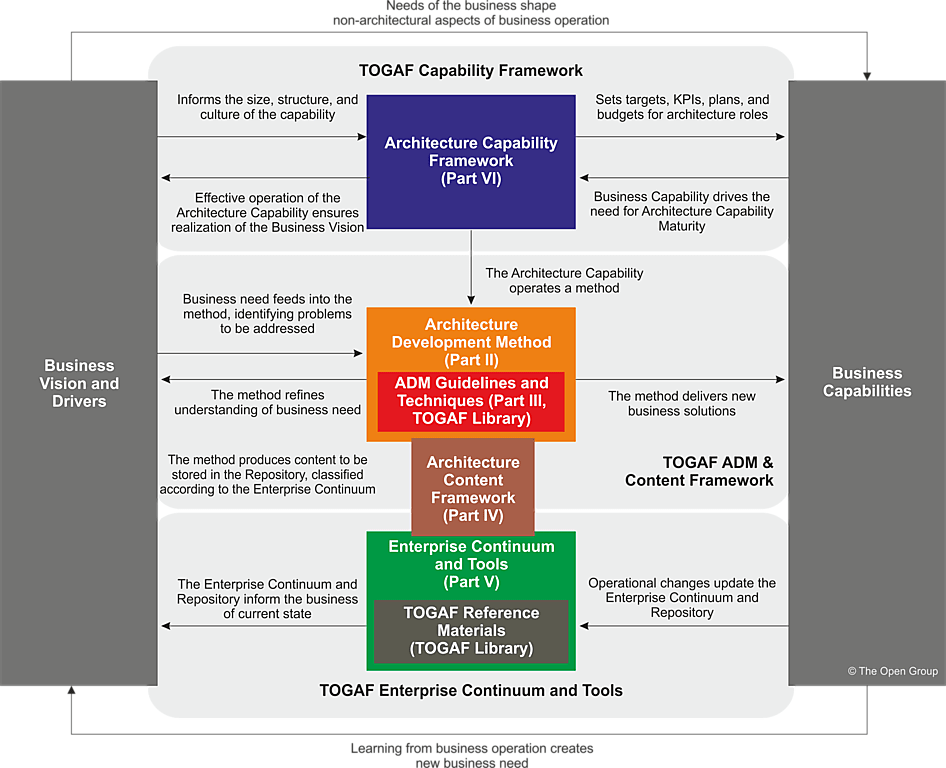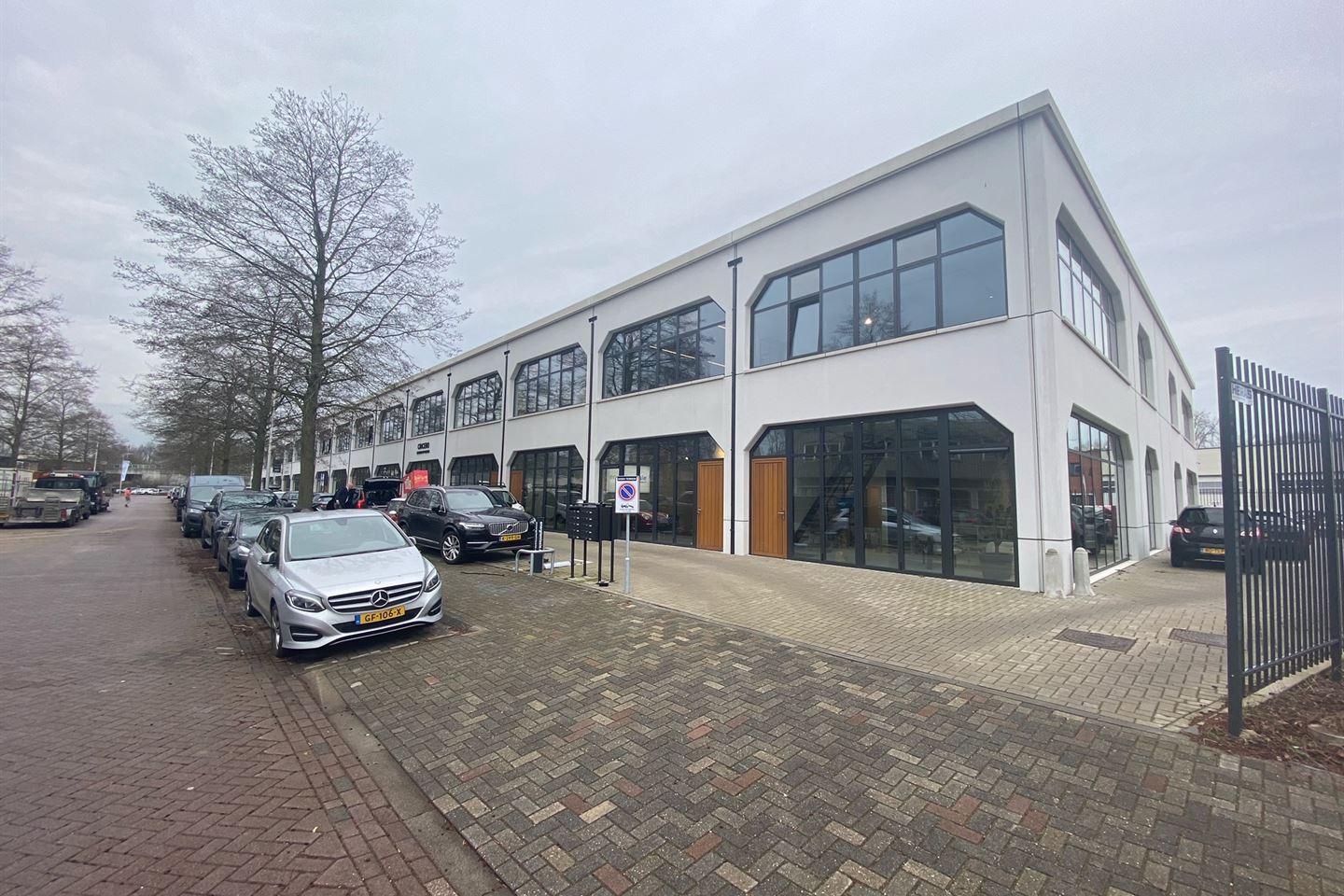TOGAF 9.2 is an enterprise architecture framework for developing and managing a business-driven IT strategy.
It is a set of methods, tools and templates to specify how the enterprise works. The TOGAF tools help to identify and model the most important risks for the organization and to explore how different approaches can remove or reduce these risks.
TOGAF is thus a complete system for designing, developing, implementing, maintaining and managing enterprise architectures that can be adapted to any type of organization or industry.
Introduction TOGAF 9.2 training
TOGAF is an abbreviation for The Open Group Architecture Framework. It is a framework that contains best practices and standards that can be used to build a system architecture.
This framework helps companies manage enterprise architecture, infrastructure architecture, and application architecture. This helps the organization to implement a unified strategy that can be executed at all levels of the organization.
De TOGAF Foundation Level 1 introduces TOGAF 9.2 and its four main components: the Architectural Building Blocks, Enterprise Continuum, Architecture Content Framework, and Architecture Development Method (ADM).
The principles of TOGAF
TOGAF is designed to be deployable at all levels of enterprise architectures: from single applications to complete IT infrastructures. TOGAF principles are expressed in terms of a set of ten key concepts supported by a set of basic principles, considerations and guidelines.
The following points summarize the key concepts:
Processes, functions and roles must be defined at all levels of the business architecture to ensure they are understood throughout the organization
The principles of TOGAF are:
- The need for a holistic approach
- The need for enterprise architecture
- The need for a clearly defined and communicated scope
- The need for an open and inclusive process
- The importance of stakeholder involvement.
TOGAF's principles emphasize the importance of high-level goals, such as business transformation, and provide guidelines for achieving them in conjunction with business architecture.
TOGAF is an open standard that is available to anyone free of charge and without obligation, although people are encouraged to donate or otherwise support the organization providing the standard.
The advantages of a TOGAF model
Using a TOGAF model has many advantages. First, it can be used to define and maintain a business architecture. The model makes it possible to identify the company's core assets, develop an architecture portfolio and define critical success factors.
TOGAF is also focused on balancing the need for innovation and the need for stability to enable continuous improvement. This balance can be achieved by adopting a strategy of identifying threats and managing risk using a wide range of architecture options that make organizations more resilient to change.
Another advantage is the ability to provide guidance in the governance process, which is helpful in making decisions about the architectural direction for an organization's future.
Furthermore, the TOGAF model provides a framework for business architecture. It is a conceptual model that will help you develop and implement IT infrastructure.
Also, the TOGAF framework allows you to create a blueprint of what your enterprise needs and how it can be implemented using IT system models. The benefits of TOGAF include streamlining the management of your enterprise, giving control over future technology investments and providing business continuity planning
As a final example, the TOGAF model helps evaluate the benefits of IT investments and provides detailed guidance for developing and maintaining an enterprise architecture. When you apply this model, you will find it easier to identify where your risks are and how to mitigate them through better design.
In short, the TOGAF framework also enables you to keep your strategic goals in mind when making IT strategy decisions, reducing the risk of failure.
Getting started with TOGAF 9.2
The latest version of TOGAF is 9.2, and it is a major upgrade from previous versions in terms of features and functionality. It also includes updates for TOGAF 8, TOGAF 7, and the original TOGAF 6.
TOGAF 9.2 is the most up-to-date version of the standard and can be used in conjunction with other frameworks to provide a holistic view of your enterprise's information systems. The update helps to provide a more flexible approach to dealing with complexity that can arise when modernizing complex IT systems.
TOGAF 9.2 also provides organizations with flexible tools that can help them navigate complexity better, while providing organizations with greater flexibility to meet their specific business information architecture management needs.
TOGAF 9.2 is an enterprise architecture framework and it is a modular framework with several components to support the needs of your business, including the following:
a) Business Architecture (BA)
b) Information systems architecture (ISA)
c) Technology Architecture (TA)
d) Organizational Architecture (OA).
The main components of this TOGAF 9.2 framework are:
The TOGAF 9.2 architecture plan provides an overview of the entire enterprise and requires you to identify your organization's business strategy and objectives, as well as how they align with your strategic goals. Once you have these elements in place, you can tailor the right architecture to best suit your business needs.
TOGAF 9.2 is designed with flexibility in mind so that it can be used by organizations at all stages of their digital environment
More about the TOGAF® Standard, Version 9.2 can be found at the responsible authority The open group.
If you would like non-binding advice about TOGAF training or Consultancy, you can always contact D-ICT Solutions via the live chat, info@dictsolutions.com or 020-2050324. Furthermore, you can read all about the trainings on the following pages: TOGAF Foundation Level 1, TOGAF Certified Level 2 en TOGAF Foundation Certified combined Level 1 + 2.
The author of this Article Gabriel Adam has many years of experience in working with TOGAF and, in addition to the TOGAF Foundation level 1 and TOGAF Certified level 2 certificates, also has the TOGAF essentials 2018 to be able to provide training.


